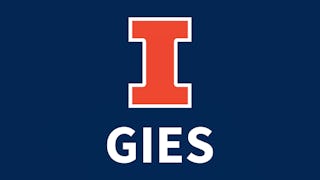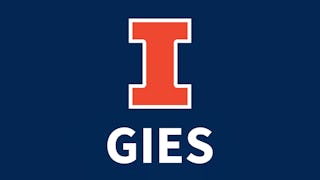In this course, we will discuss fundamental principles of trading off risk and return, portfolio optimization, and security pricing. We will study and use risk-return models such as the Capital Asset Pricing Model (CAPM) and multi-factor models to evaluate the performance of various securities and portfolios. Specifically, we will learn how to interpret and estimate regressions that provide us with both a benchmark to use for a security given its risk (determined by its beta), as well as a risk-adjusted measure of the security’s performance (measured by its alpha). Building upon this framework, market efficiency and its implications for patterns in stock returns and the asset-management industry will be discussed. Finally, the course will conclude by connecting investment finance with corporate finance by examining firm valuation techniques such as the use of market multiples and discounted cash flow analysis. The course emphasizes real-world examples and applications in Excel throughout. This course is the first of two on Investments that I am offering online (“Investments II: Lessons and Applications for Investors” is the second course).

Enjoy unlimited growth with a year of Coursera Plus for $199 (regularly $399). Save now.

Investments I: Fundamentals of Performance Evaluation
This course is part of Financial Management Specialization

Instructor: Gies College of Business, University of Illinois
56,172 already enrolled
Included with
(926 reviews)
What you'll learn
Explain the tradeoffs between risk and return.
Form a portfolio of securities and calculate the expected return and standard deviation of that portfolio.
Describe what is meant by market efficiency and what it implies for patterns in stock returns and for the asset-management industry.
Conduct specific examples of a market multiples valuation.
Skills you'll gain
Details to know

Add to your LinkedIn profile
5 assignments
See how employees at top companies are mastering in-demand skills

Build your subject-matter expertise
- Learn new concepts from industry experts
- Gain a foundational understanding of a subject or tool
- Develop job-relevant skills with hands-on projects
- Earn a shareable career certificate

There are 5 modules in this course
In this module, you will become familiar with the course, your instructor, your classmates, and our learning environment. The orientation also helps you obtain the technical skills required for the course. In Module 1, we will build the fundamentals of portfolio formation. After providing a brief refresher of basic investment concepts (our toolkit), a summary of historical patterns of stock returns and government securities in the U.S. is provided. We then consider general examples of portfolio choice to highlight the tradeoffs between “risk” and return. We end the module with a discussion of dominated assets and efficient portfolio formation, emphasizing real-world examples and practice in Excel solving for the optimal portfolio given certain constraints (such as the amount of volatility we will accept in our portfolio).
What's included
27 videos13 readings2 assignments1 plugin
In Module 2, we will develop the financial intuition that led to the Capital Asset Pricing Model (CAPM), starting with the Separation Theorem of Investments. We will understand that in a CAPM setting, only the market-wide risk of an asset is priced – securities with greater sensitivity to the market are required by investors to yield higher returns on average. We will also learn how to interpret regressions that provide us with both a benchmark to use for a security given its risk (determined by its beta), as well as a risk-adjusted measure of the security’s performance (measured by its alpha).
What's included
21 videos3 readings1 assignment1 peer review
In Module 3, we will discuss different asset-pricing models, the pros and cons of each, and market efficiency. In particular, we will test the effectiveness of the Capital Asset Pricing Model (CAPM) and examine survey data concerning its use by chief financial officers (CFOs) of firms. Predictable patterns in stock returns, such as the size and value effects, will also be examined and the Fama-French 3-Factor Model will be introduced. Market efficiency will be discussed in this module, as well as its implications for the asset-management industry and observed patterns in stock returns.
What's included
18 videos3 readings1 assignment1 peer review
In Module 4, we will learn about the two key approaches to valuing a company or stock: market multiples and discounted cash flow. We will learn how to value perpetuities and will discuss how caution should be exercised in terms of projecting both the growth in long-term cash flows and the riskiness of those cash flows – two key components of the perpetuity formula. Finally, to gain experience with the market multiples approach, we will estimate a value of Google at the time of its initial public offering (IPO) back in 2004 using market data on Yahoo! as a comparable firm.
What's included
27 videos2 readings1 assignment
In this module, we say goodbye to the Investments course as key takeaways from the course are reviewed. A tease is also provided to topics that will be covered in Professor Weisbenner's second course on Investments.
What's included
1 video2 readings
Earn a career certificate
Add this credential to your LinkedIn profile, resume, or CV. Share it on social media and in your performance review.
Build toward a degree
This course is part of the following degree program(s) offered by University of Illinois Urbana-Champaign. If you are admitted and enroll, your completed coursework may count toward your degree learning and your progress can transfer with you.¹
Instructor

Offered by
Explore more from Finance

University of Illinois Urbana-Champaign

University of Illinois Urbana-Champaign

University of Illinois Urbana-Champaign

University of Illinois Urbana-Champaign
Why people choose Coursera for their career




Learner reviews
926 reviews
- 5 stars
83.58%
- 4 stars
10.36%
- 3 stars
3.13%
- 2 stars
1.51%
- 1 star
1.40%
Showing 3 of 926
Reviewed on Nov 9, 2018
One of the best courses across platforms- classroom or online that I have taken. Huge real life value addition. Professor Scott has worked incredibly hard in putting this valuable content.
Reviewed on Feb 15, 2021
Great content and excellent presentation! This was not my first investment course but certainly the most enjoyable one. Many thanks!
Reviewed on Jul 27, 2017
Normal course work was very good. The Honors content was a bit disappointing in that I finished it before the weeks deadline but never received a grade.

Open new doors with Coursera Plus
Unlimited access to 10,000+ world-class courses, hands-on projects, and job-ready certificate programs - all included in your subscription
Advance your career with an online degree
Earn a degree from world-class universities - 100% online
Join over 3,400 global companies that choose Coursera for Business
Upskill your employees to excel in the digital economy
Frequently asked questions
Once you enroll for a Certificate, you’ll have access to all videos, quizzes, and programming assignments (if applicable). If you choose to explore the course without purchasing, you may not be able to access certain assignments.
You will be eligible for a full refund until 2 weeks after your payment date. You cannot receive a refund once you’ve earned a Course Certificate, even if you complete the course within the 2-week refund period. View our full refund policy.
Yes! Coursera provides financial aid to learners who would like to complete a course but cannot afford the course fee. To apply for aid, select "Learn more and apply" in the Financial Aid section below the "Enroll" button. You'll be prompted to complete a simple application; no other paperwork is required.
More questions
Financial aid available,

